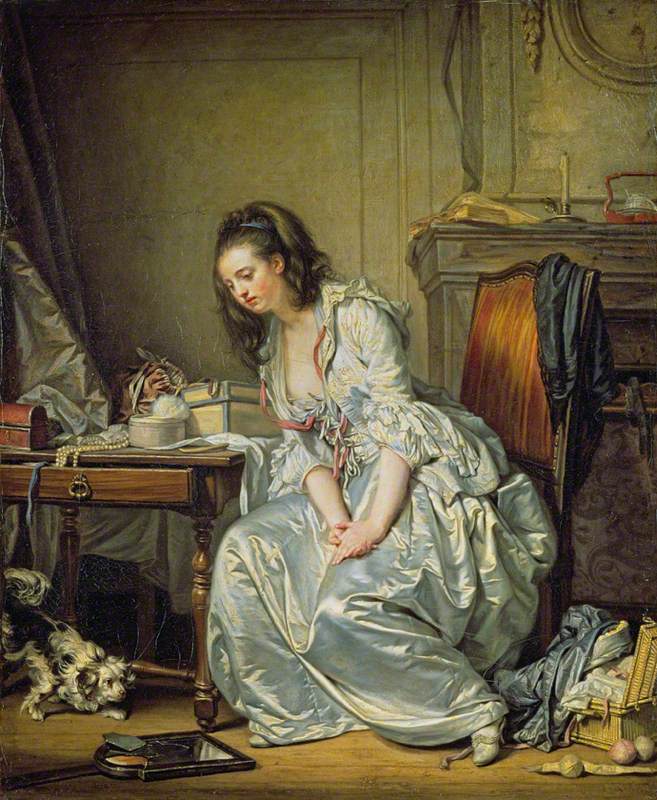The Broken Mirror
Renowned for his portraits and genre paintings, Jean-Baptiste Greuze (1725-1805) was popular in the 1760s but is quite unfashionable today. He had an astute sensitivity for capturing subtle emotions in his subjects’ faces, reproducing inner thoughts and feelings in such a way as to permit us as a viewer to participate in the scene before us on a personal and psychological level.
The Broken Mirror (c.1762-3) is an allegorical painting that conveys a message of broken morals. Like many artists before him, Greuze used a damaged object as an analogy of a person’s internal condition and did so in other paintings, such as The Broken Eggs (1756, The MET) and The Broken Pitcher (1771, Louvre). Furthermore, a mirror implies several interesting concepts which we might explore. Mirrors reflect our own image back to us and are associated with vanity. They are often seen in paintings of women at their toilette, a private ritual of washing and dressing turned iconographic theme in art. These are sometimes anonymous women, sometimes the goddess Venus, whose attribute is a mirror. Since ancient Roman times, breaking a mirror was believed to lead to seven years of bad luck. In the time before glass mirrors, reflective polished materials such as obsidian were thought to reflect the soul of the person looking into them, and damage to the reflection resulted in damage to the soul. With these suggestions in mind, let’s turn to the painting.
We are presented with a beautiful young woman, wearing a luxuriously shimmery yet dishevelled dress, her undone hair cascading around her face. The room she occupies in is disarray, with clothes strewn about and discarded items covering the side table. We might note the string of pearls which spill into a half-opened drawer. Pearls are usually symbols of innocence or virginity, but here the artist has used them to contrast with the condition of their owner. The lady leans forward in her chair with her hands clasped, peering down into the cracked mirror on the floor. In the left-hand corner, a little dog (customarily a symbol of fidelity) has been startled by the smashing of the glass. We do not know whether the mirror was broken intentionally or by accident, but the woman’s face expresses despair and weariness. Her downcast eyes, flushed cheeks and slightly parted mouth speak to me of sad, exhausted feeling one gets after a bout of crying. Whatever has happened that has led to this moment, we can grasp the emotional aftermath.
This painting can be an opportunity for self-reflection. We may examine the suffering of another and feel sympathy or empathy. Perhaps we recall a time when we also felt deep desperation or sorrow, and by finding compassion for another, even if just a woman in a painting, we may reflect that feeling back onto ourselves.

